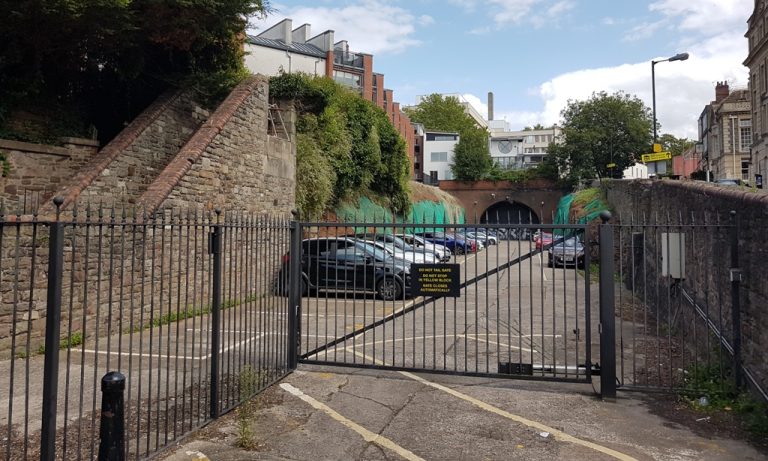Residents had hoped that Hugh Pratt’s unwelcome plans to build 44 residential units in the railway cutting alongside Guinea Street had been permanently withdrawn when his architect Alec French did not seek planning permission for the scheme. We now hear that Pratt’s solicitors (Burton & Co LLP) have served notice on property owners along Barossa Place to prevent them from acquiring right to light status following 20 years of uninterrupted light.
The right to light for Barossa Place residents is one of many reasons for residents strongly to object to Hugh Pratt’s ambitions for the railway cutting. The scheme also destroys a site of significant historical interest: the rail link from Temple Meads under the graveyard of St Mary Redcliffe on its way to the harbour, opened in 1876.
Bristol City Council and the local community of Redcliffe worked together on how the area should be developed. One of their aims on West Redcliffe was to:
preserve the unique characteristics of the railway cutting (‘Barossa Valley’), namely its proportions and sense of openness, the dramatic form of the tunnel and approach, and its historical, geological and wildlife interest. Ensure that any future use of the cutting maintains the tranquil nature and security of the site, and is responsive to the character of both the entire Redcliffe area with its industrial heritage, and the immediate built environment.

